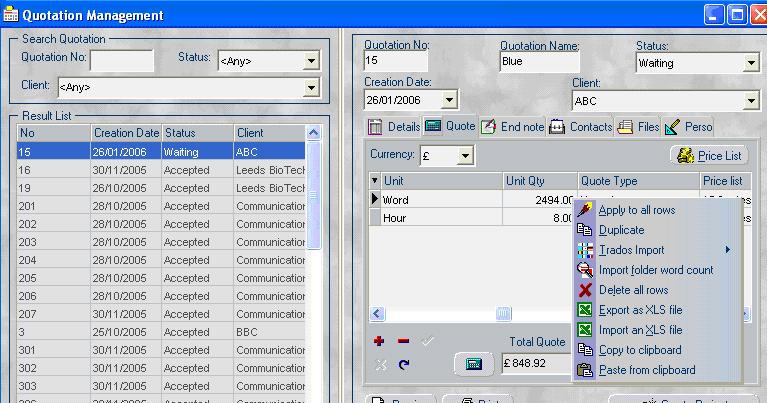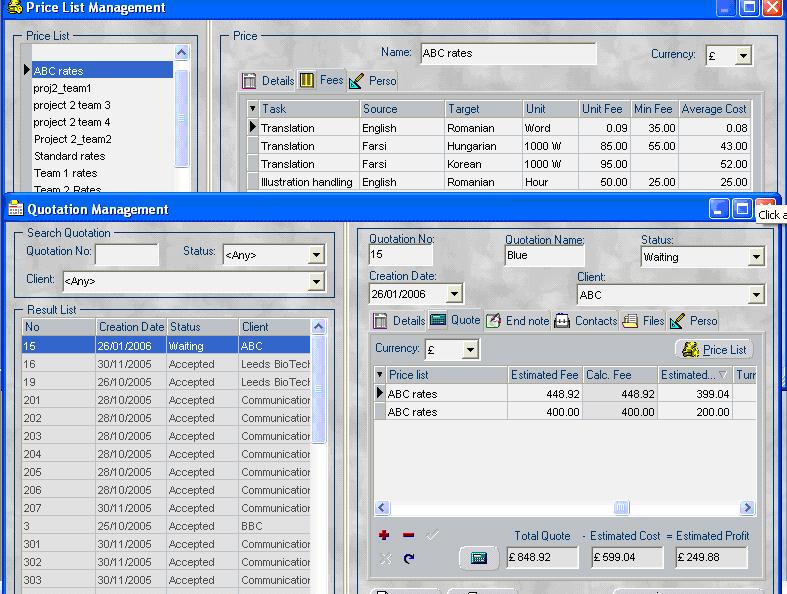Getting a quote right is one of the key elements of Project Management. To deliver a correct quote, the project manager has to take into account all the steps that a project will take, and all the tools and resources it will need.
There are two main aspects the project manager has to consider when creating a quote, i.e. volume and costs.
The volume of work has to be calculated consistently:
- word count/page count – irrespective of the unit you are using – word, page, line, character, etc.- use that unit consistently
- illustration count – simple illustration containing text to translate, screenshot, illustration that needs faking, etc. You will need to know the exact volume of each type of illustration as their rate and time to be spent on them vary
- hour count – web and software testing & compilation, debugging, recreation of original animation, etc
In LTC, the quote itself is generated in the Quote module/Quotation Management window, after creating a number/name for the new translation project. There are several ways in which you can input the work volume in LTC:
- manually – perform a word count yourself using Word or another application and then introduce it manually under the Unit Qty tab
- automatically - using the Import folder word count function by right-clicking on the Unit Qty tab in the Quote - LTC will look in the source text folder and extract word counts for every file it contains.
- manually & automatically – LTC interacts with Trados by using the log file that Trados produces when analysing files. This is especially helpful if you are using a translation memory, since you’ll have all the information about Exact/Fuzzy matches and will be able to calculate the costs based on this information.

Importing word counts into LTC Organiser
After having introduced all the data you need - target language, tasks, word counts, you are ready to calculate the costs and create a quote for the client. The quote for the client is based on the data you have gathered regarding the volumes to be processed, the unit prices, the resources involved and the deadlines.
Don't forget about the steps you identified at the beginning of the project and introduce each and every one here, if you want to get paid for them! As mentioned before, you have to think about both the fixed and the variable costs.
The Total Quote is calculated by combining the information from the Price List module and the Client Quotes module. The estimated profit is an average which is calculated by combining information from the Price List module and the Supplier Quotes module, but it will vary according to the supplier used in the end – some suppliers obviously charge higher rates than others.
At this stage, the system also calculates the gross profit margin, called in LTC Estimated Profit. This is done by subtracting the estimated cost – that your suppliers will charge you - from the total amount that you will charge your client. Since you have not yet assigned specific suppliers to all the tasks, the estimated cost is calculated as an average of the prices charged by all your suppliers for those tasks appearing in the quote.
From the sum that represents the gross profit, the fixed costs and the tax are deducted. The result represents the net profit, from which you can further deduct dividends.

Generating a quote in LTC Organiser

